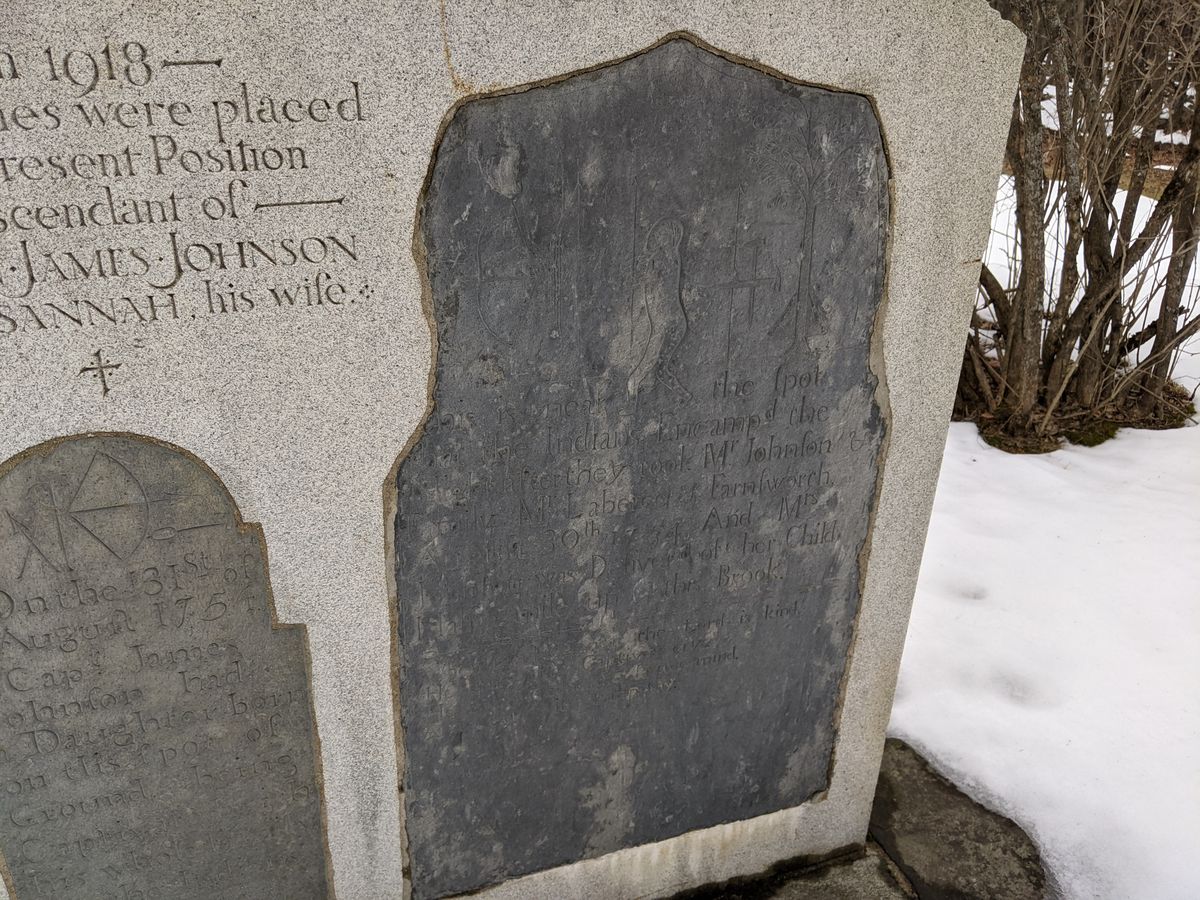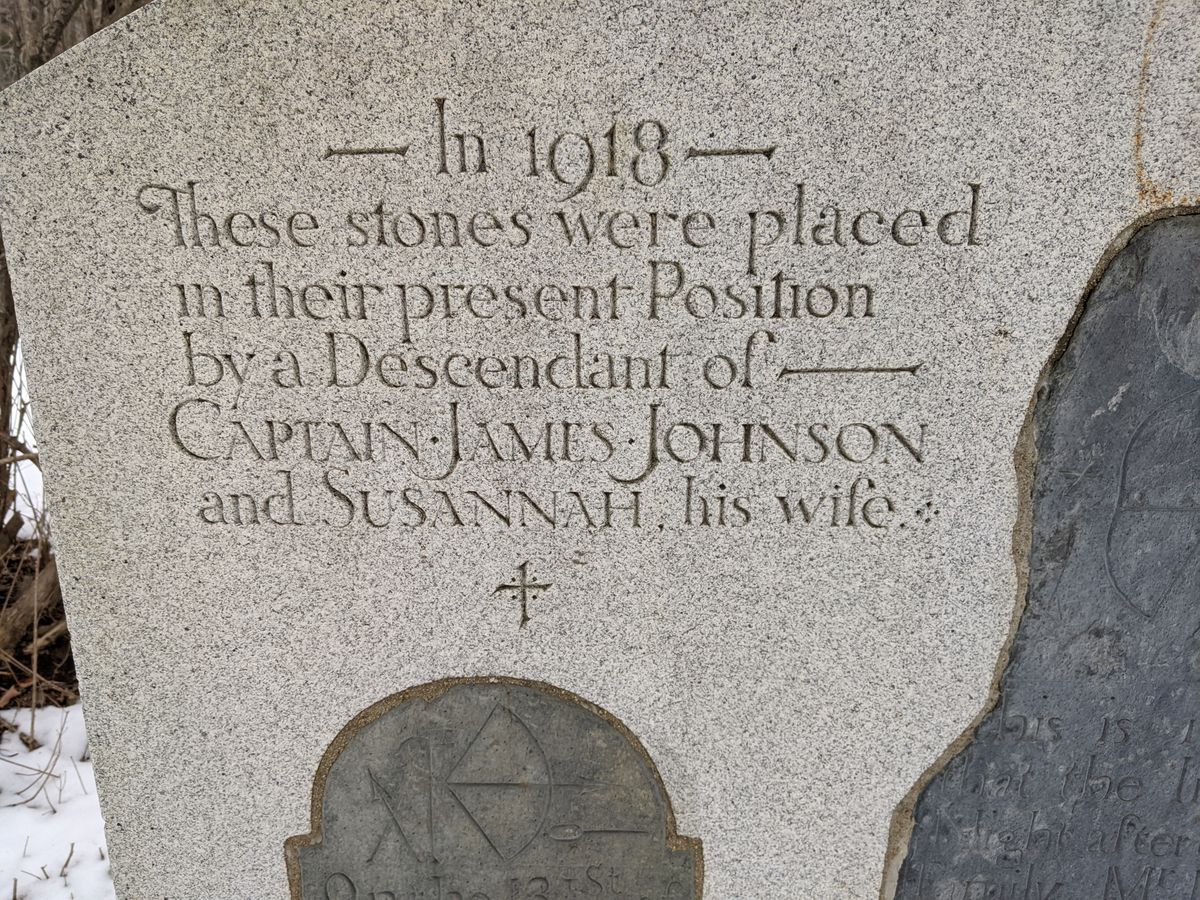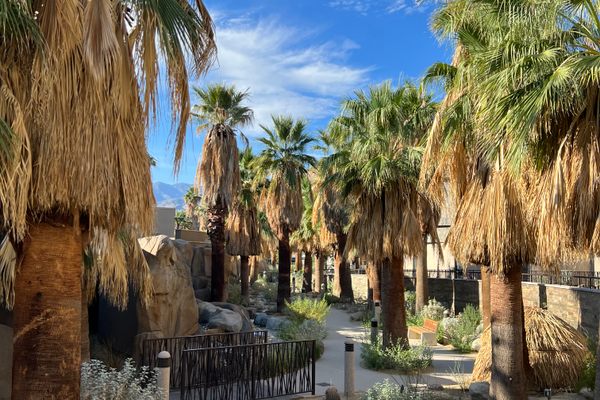About
Nestled deep within the rollings hills of Vermont at an unsuspecting pullout on Route 106, stands a granite slab not terribly different from those used as headstones. What makes these commemorative stones so special is their engravings that shed a fascinating light on some of the region's history.
In 1754, a group of Abenaki Native Americans attacked Fort No. 4 in Charlestown, New Hampshire during the French and Indian War. Taking a small group of prisoners, including Captain James Johnson and his wife Susannah, the Abenakis began heading back to Saint Francois du Lac. Along the way, Susannah gave birth to a daughter in captivity.
The Johnson family survived and their new daughter, Elizabeth Captive Johnson delighted people with the tale of her unusual birth. In 1799, she hired a stonecutter to carve a pair of commemorative stones to be placed at the approximate location of her birth.
As the stones aged and weathered, her descendants had them inlaid in the granite slab seen today. These are not only the oldest commemorative markers in the state, but among the oldest in the United States.
Related Tags
Know Before You Go
The Indian Stones are located right off State Highway 106, you can't miss it if you're looking for the iconic historical marker.
Published
January 20, 2021


































